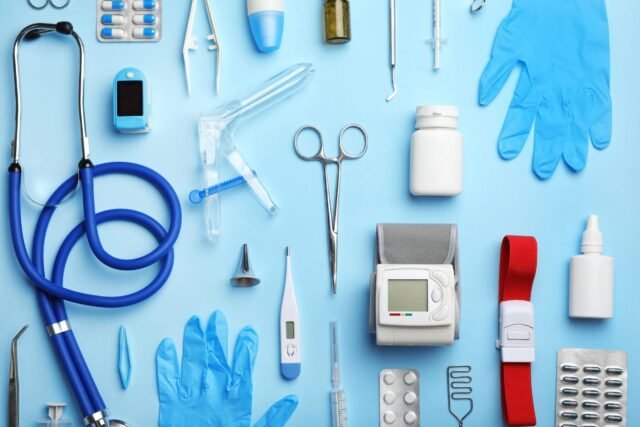Surgical medical equipment plays a foundational role in the quality and safety of patient care during operations. These tools enable healthcare professionals to perform precise, efficient, and safe surgical procedures while maintaining a sterile environment and reducing the risk of complications. Whether you manage a hospital, nursing home, or surgical center, understanding the types of surgical equipment and their key uses is essential for ensuring your facility is prepared to deliver effective surgical care.
Below, we explore what surgical medical equipment includes and the top 10 major uses of these tools in day-to-day clinical practice.
What is Surgical Medical Equipment?
Surgical medical equipment includes all sterile, high-precision instruments and devices used before, during, and after surgical procedures. This category encompasses:
- Cutting and dissecting instruments (scalpels, scissors)
- Grasping and holding tools (forceps, clamps)
- Hemostatic devices (clamps, ligation tools)
- Wound closure devices (skin staplers, suturing tools)
- Infection control products (drape sheets, surgical gowns)
- Patient monitoring devices (ECG, anesthesia monitors)
Quality surgical equipment is designed for durability, sterility, and ease of use, ensuring surgeons and operating teams can perform complex procedures with consistency and confidence.
Top 10 Major Uses of Surgical Medical Equipment
1. Making Accurate Incisions
Surgical scalpels and scissors are used for making precise incisions while minimizing tissue trauma. These instruments are foundational in surgeries across specialties, from general surgery to plastic and orthopedic procedures.
2. Managing Tissue Handling
Instruments like forceps and retractors allow surgeons to hold, lift, and move tissues safely, providing clear visibility and access during procedures without damaging delicate structures.
3. Controlling Bleeding
Hemostatic clamps and ligation devices are essential for managing bleeding during surgery, maintaining a clear field of vision while reducing blood loss to protect patient safety.
4. Closing Wounds Effectively
Surgical medical equipment such as skin staplers, suturing sets, and wound closure devices is used to close incisions securely post-operation. Products like disposable skin staplers from SKMS enable quick, consistent closure, reducing surgery time while maintaining wound integrity.
5. Supporting Infection Prevention
Maintaining a sterile field is critical in surgical settings. Surgical drape sheets, gowns, and sterile gloves prevent contamination during procedures. For example, drape sheets available from SKMS protect the surgical field and the patient, ensuring a safe environment during interventions.
6. Assisting in Patient Monitoring
Devices like ECG machines and anesthesia monitors track vital signs during surgeries, allowing surgical teams to detect and respond to any changes in patient status immediately, ensuring safety throughout the procedure.
7. Organizing Instruments for Efficiency
Sterilization trays and surgical trolleys help organize and transport instruments efficiently in the operating room. This organization ensures the surgical team can access tools swiftly, reducing delays during operations.
8. Facilitating Orthopedic and Specialized Surgeries
Orthopedic procedures often require specialized surgical tools such as bone saws, orthopedic implant sets, and reamers. These devices help surgeons perform complex bone and joint surgeries with precision, reducing complications and enhancing patient recovery.
9. Managing Emergency Surgical Interventions
Surgical sets and emergency procedure kits enable rapid response in trauma cases, where time-sensitive interventions are necessary to save lives. Having ready-to-use, sterilized surgical equipment ensures facilities can act promptly during emergencies.
10. Supporting Post-Operative Care
Surgical medical equipment also includes drainage systems and dressing supplies that support wound healing after surgery. These tools minimize infection risks and ensure a smoother recovery process for patients post-operation.
Conclusion
Surgical medical equipment is essential in ensuring that hospitals and clinics deliver precise, safe, and efficient surgical care across all specialties. From performing accurate incisions to managing post-operative recovery, each tool plays a significant role in patient outcomes and operational quality. By investing in high-quality, durable surgical equipment and ensuring regular staff training in handling and sterilization, your facility can maintain a high standard of surgical care while enhancing patient safety and satisfaction.
Facilities seeking reliable surgical equipment can partner with an experienced surgical medical equipment supplier like SKMS to source certified, advanced products that support your operational excellence and commitment to quality care.







